The following is guest post from Sawaram Suthar. Sawaram is head of marketing at Acquire, and also a founder of Jagat Media. A digital marketing consultant, he has experience in branding, promotions and page optimization, along with research and strategy. He has an MBA from the University of Pune.
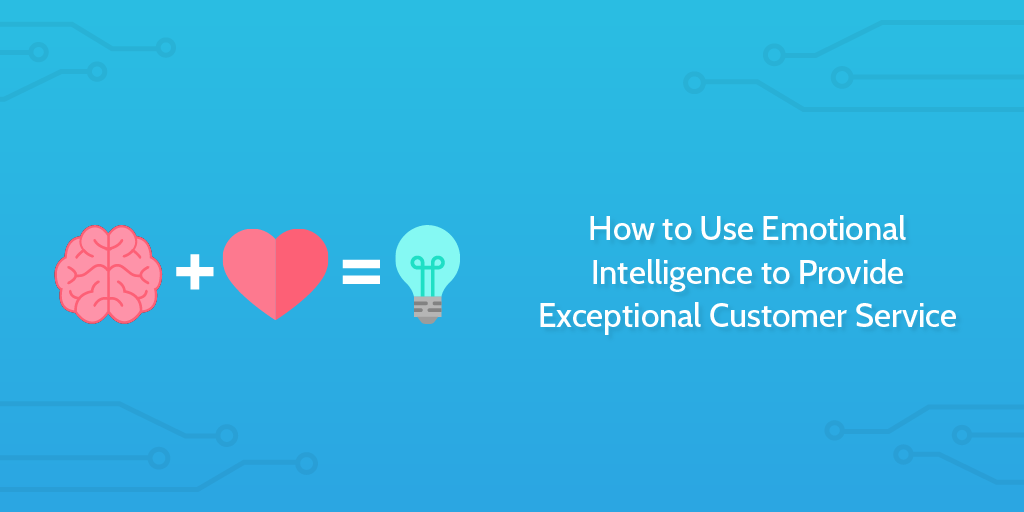
Most brands optimize rational factors that affect customer behavior such as price points and product features. But today’s audience make purchase decisions based on their emotional experience as well.
Understanding customer emotion plays a key part in building customer engagement and brand loyalty, both of which can contribute to better sales, revenue and ROI.
There are plenty of studies to back me up on that. For example, research from 1997 at a large insurance company found sales agents with high emotional intelligence sold policies with an average premium of $114,000, which was almost double the figure for agents with low emotional intelligence.
And, according to a TalentSmart research paper, high-performing customer service staff are also the #1 scorers for emotional intelligence:

Emotional intelligence can transform your customer experience by giving you deep insights into how and why your buyers think and act.
In this guide, I’m going to explain what emotional intelligence is, and how you can use it to exceed customer expectations and revenue targets.
What is emotional intelligence? How is it relevant to providing exceptional customer service?
Emotional intelligence is the ability to understand others’ emotions, empathize with those emotions and respond to them appropriately. But how does it apply to customer service?
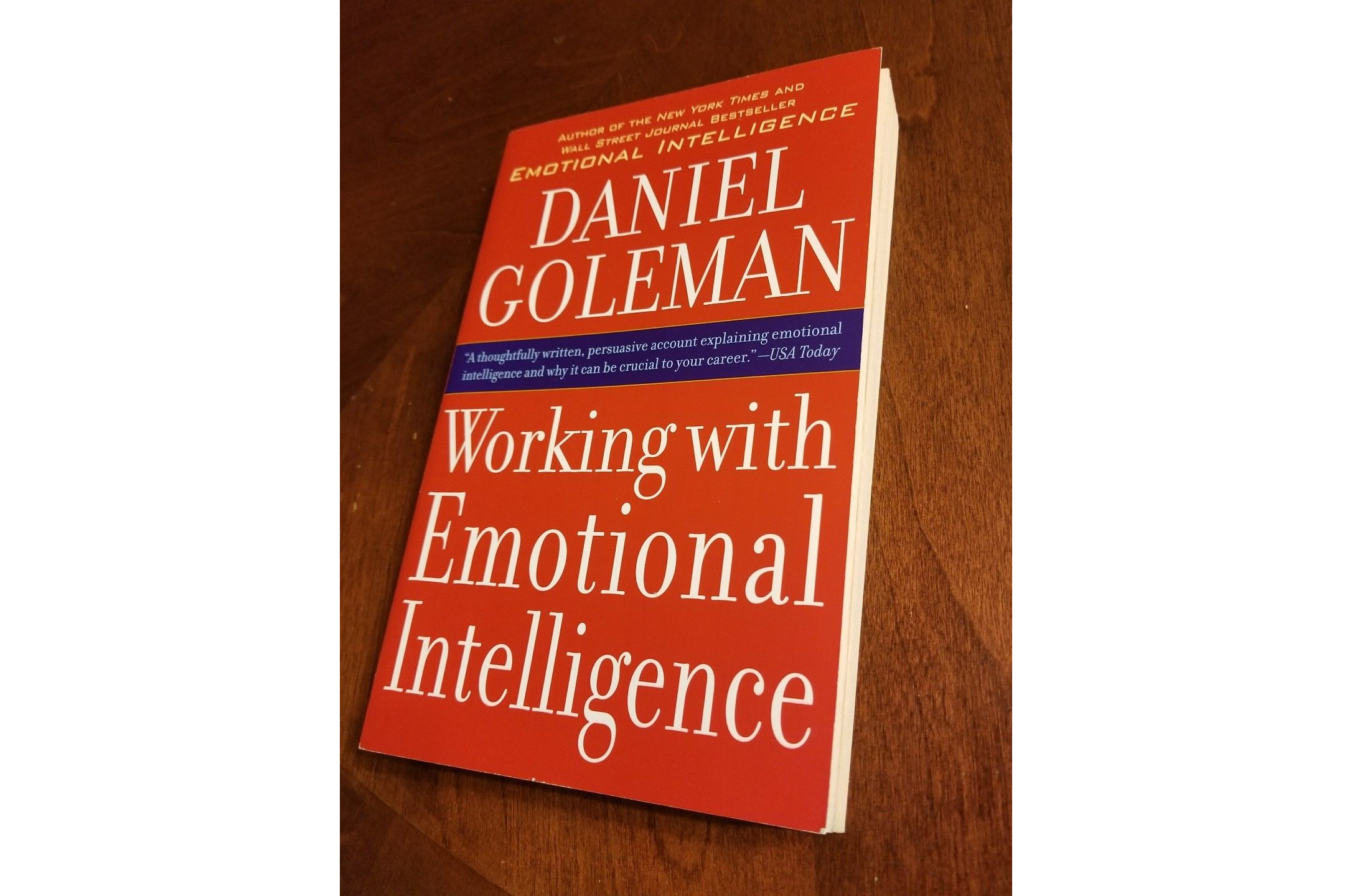
Daniel Goleman, in his book Working with Emotional Intelligence, helps make the connection:
“How customers feel when they interact with an employee determines how they feel about the company itself. In a psychological sense, the ‘company’ as experienced by the customer is a sum of these interactions. Loyalty is lost or strengthened in every interaction between a company and its customers.”
For instance, a few years ago, I signed up for an MBA consultancy service based on its reputation in the market, only to find that my experience was nothing like I expected. Both consultants insisted on me using software that was enforced by their management — software with which I had consistently had trouble. On multiple occasions, I complained to my counselors about the time that I wasted on the software. On each of those occasions, they ignored my woes and complaints.
What made matters worse was that the two counselors weren’t coordinating their efforts, and I was often made to repeat my progress to one or the other, making it a frustrating ordeal.
The result? I refused to give them a positive Google review when they requested one, and I was left with no choice but to share the disappointing experience with dozens of their potential customers (my friends) when they asked me about it.
That’s why it’s important to invest in creating an exceptional customer service — if your business has an online audience, the feedback you get will be public, permanent, and visible to all of your target audience. If the consultancy had paid attention to my emotions, they would have been well positioned to both prevent a disaster and create a better customer experience.
But before we delve into how that can be done, let’s understand common customer emotions.
Common customer emotions and dealing with them
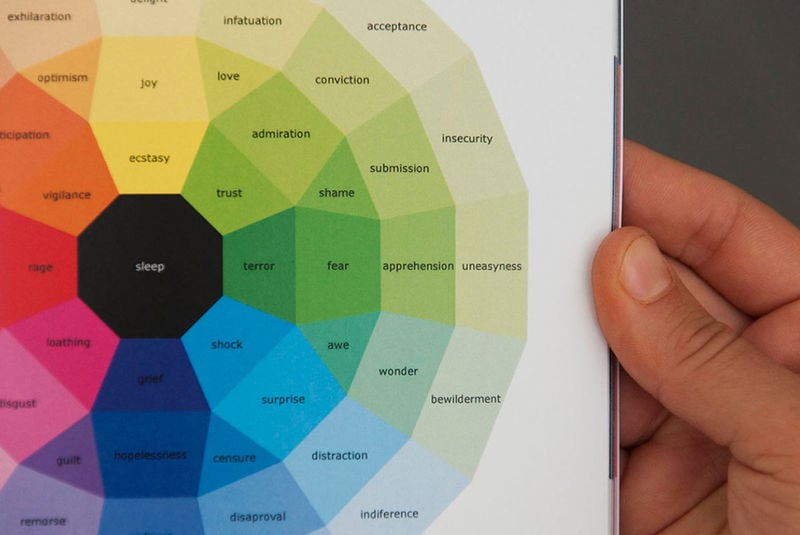
The most challenging aspect of dealing with customer emotions, whether they’re positive or negative, is the fact that emotions are intangible, complex and difficult to perceive.
However, we can tackle this issue by broadly classifying emotions into positive and negative categories and understanding, on a basic level, how each category can be approached.
Positive emotions: surprise, happiness and gratitude
If the customer you’re on a call or chat with seems chatty, happy, surprised or grateful, you can have a deeply impactful and relationship-enhancing conversation.

To do that, you should first switch your business tone for a conversational and friendly one. Ask how your customer is doing or make a joke about the weather if they’re local. Show them a bit of your personality and give them room to share theirs. This type of positive interaction can have a huge impact on customers, encourage repeat orders and drive recommendations.
Negative emotions: anger, frustration and disappointment
If you’re paying attention, it’s easy to identify if someone is angry, frustrated or disappointed. More often that not, customers will explicitly share negative emotions with you. When dealing with such emotions, it’s critical for you to be open minded, patient and empathetic. Understand where they’re coming from and what you can do to resolve that situation.

For instance, if a customer reports downtime that causes them to miss a deadline, you need to empathize with their anger. Even if you’re reading them a standard response, change your tone. Be patient. Allow them room to vent their frustration. Explain your situation. Make them feel heard.
How can emotional intelligence and empathy be used to power customer service?
Empathy and care are key in applying emotional intelligence to customer service. We’ve discussed empathy earlier on, now let us look at care.
How can you show your customers that you care? The answer is simple:
Make an impact on them, emotionally. In some instances, this type of customer service exchange can be great PR, improving the perception that customers have of your brand on a larger scale. For inspiration, here are a few examples of those instances:
Trader Joe’s

An elderly man was once locked in at his Pennsylvanian home after a severe snowstorm. His daughter was worried about his not having any access to food and groceries due to bad weather. After phoning a couple of stores to check if they would deliver, she reached Trader Joe’s, who also told her they don’t deliver — even under normal circumstances.
Due to the extreme situation, they not only promised to deliver but also suggested low sodium items that fit her father’s diet. In fact, this isn’t an isolated incident. The company has exceptionally high emotion ratings and consistently surpasses customer expectations.
Amazon
In 2007, an Amazon customer ordered a PlayStation as a Christmas present for his son. The present arrived when the customer was away, so a neighbor signed for it and left it on his doorstep — but it soon disappeared. Even though Amazon wasn’t technically to blame, they showed their customer that they cared by sending him a new PlayStation for free, waiving off even the extra shipping charge.
“The $500 favor the company did for me this Christmas will surely rebound in additional business down the line. Why would I ever shop anywhere else online? Then again, there may be another reason good customer service makes sense. “Jeff used to say that if you did something good for one customer, they would tell 100 customers,” Mr. Kotha said.”
Sainsbury’s
Here’s another instance where 3-year-old Lily Robinson wrote to Sainsbury’s questioning them why their tiger bread wasn’t called giraffe bread.
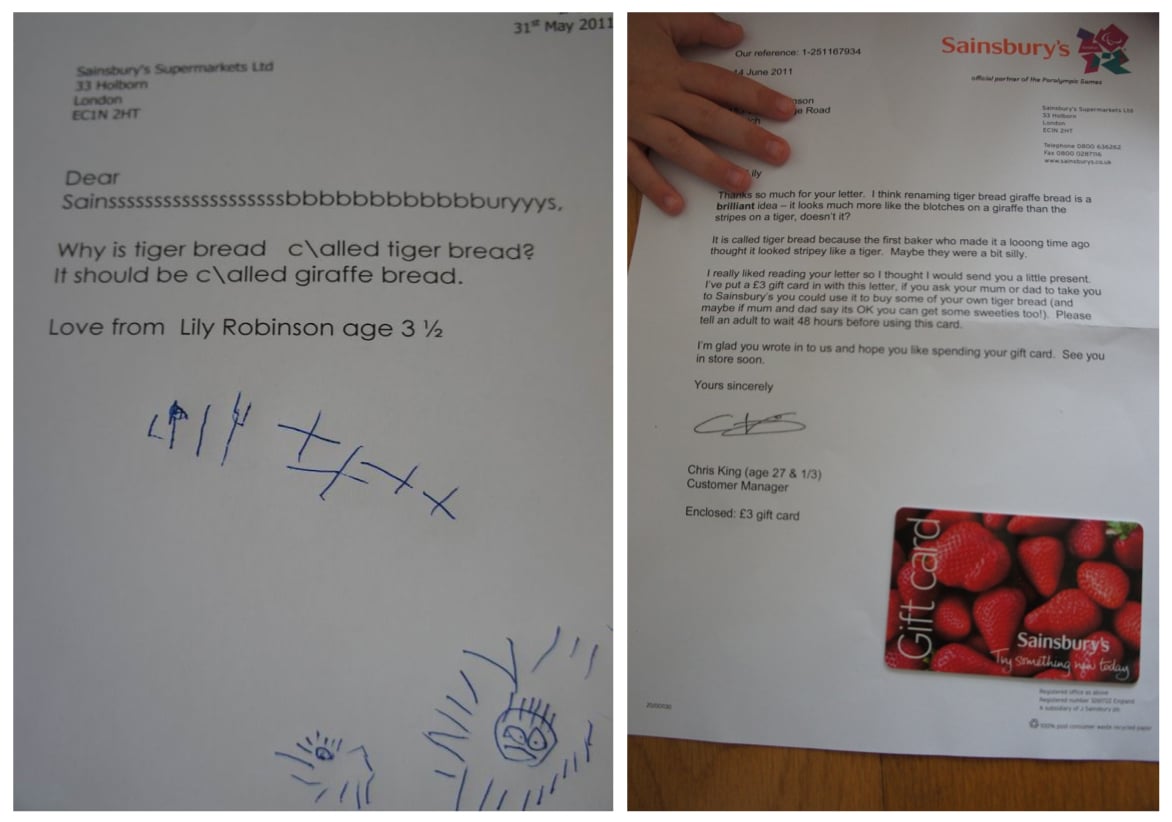
The company’s customer service manager Chris King took the opportunity to show customers that their notes were read and heard. He did so by replying to the tiny tot with “I think renaming it to giraffe bread is a brilliant idea!” A few months later, tiger bread was renamed.
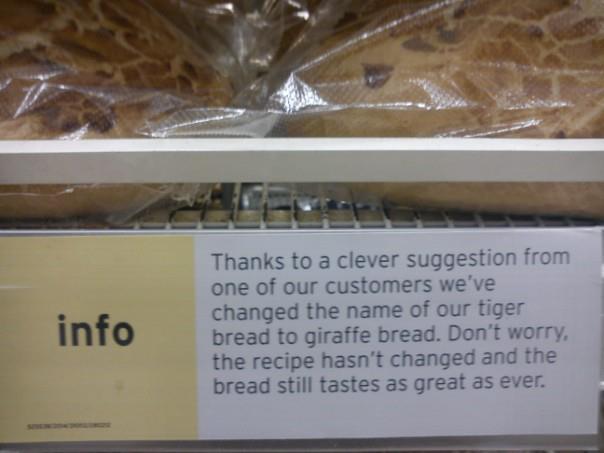
Emotional intelligence played an important role in enabling the quality of customer service that you see in the above three examples. You can raise the quality of customer service at your organization by training your employees to be empathetic and investing in tools that help you gather emotional intelligence.
Any tool that can help you assess or respond to customer emotions can help you improve customer service. While you could work with simple tools like SurveyMonkey to collect customer feedback, it also makes sense to work with data collection tools that analyze customer behavior patterns.
For instance, Acquire is an automated messenger platform that is trained to read customer behavior patterns and respond to them instantly, avoiding delays and considering customer emotions. AI-based platforms like these can play the buffer to your customer support team and enhance customer experience.
In addition to working with apps like these, you should also consider training your customer executive force to understand emotions and be empathetic.
How customer service executives can apply emotional intelligence to provide the best service
Emotional intelligence in human beings is something that is developed over time, with learning that occurs in social situations. However, you can enhance your customer service team’s skills right now by equipping them with some basic knowledge on how to improve their emotional intelligence.
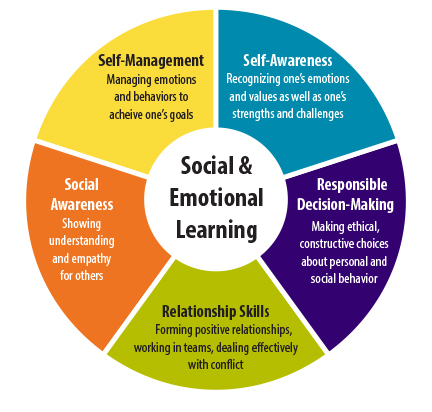
There are 5 basic elements:
- Self-awareness – the ability to recognize and understand your moods and emotions, as well as their effect on others.
- Self-regulation – the ability to control disruptive impulses, to suspend judgment and to think before acting.
- Internal motivation – a passion to work for internal reasons that go beyond money and status (e.g. learning, experiencing, having a happy family).
- Empathy – the ability to understand emotions of other people.
- Social skills – the ability to manage relationships and build networks.
Demonstrate these elements to your workforce with examples, so they understand what it means to be emotionally intelligent when dealing with customers. You can also share best practices and policies that they can follow even before they fully grasp the concept of emotional intelligence.
Tips to provide emotionally intelligent customer service
Before a customer service rep begins his or her day, it’s vital for them to create a positive and productive mindset, which can help maneuver some really sticky situations. Once this is done, a few simple tips can enable the rep to provide excellent customer service. Here are 5 tips to that effect.
1. Empathize, don’t analyze
Analyzing, justifying or reacting to a customer’s behavior is pointless. It’s the product designer’s job. While customer service reps can note and convey reactions to product features, their job is simply to resolve problems in present scenarios. Simple empathy sometimes is all a customer needs. Just saying “I understand” — and meaning it — can diffuse high-tension situations.
2. Focus on customer needs
What exactly is the customer asking for? Sometimes, customers themselves are unaware of what they need. Other times, they fail at communicating their needs clearly. That’s when customer service executives need to step in and help customers convey their specific issues. Filling in the gaps and understanding a range of common situations is an important part of the customer service role.
3. Harness AI-based solutions
When implementing solutions on a large scale, customer service managers can benefit from using AI-based solutions. Apart from AI-based chat solutions we discussed earlier in this post, there are AI-based analytics solutions that customer service managers can use to study and improve customer service processes.
4. Take breaks to recharge
Basecamp, a SaaS company, has its customer service employees work the “queue” or phone lines for only 2 hours each day. The rest of their workday is spent in research, innovation and creativity in improving customer service. Since the employees aren’t expected to answer queries all day, they’re not drained from the effort.
With so much time left to improve their support skills, reps actually have the opportunity to analyze current processes and improve on them every day. In their own words, this approach has improved the company’s customer service performance.
In conclusion
Customer experience depends on so much more than just price points and product experience. Every interaction that a customer has with your company matters and is an opportunity to build a better brand-customer relationship. And you can use these opportunities to foster a powerfully positive perception of your company in the long-term.
How would you rank your own emotional intelligence? Are you doing anything to improve your staff’s skills in that area? Let me know in the comments!







 Workflows
Workflows Projects
Projects Data Sets
Data Sets Forms
Forms Pages
Pages Automations
Automations Analytics
Analytics Apps
Apps Integrations
Integrations
 Property management
Property management
 Human resources
Human resources
 Customer management
Customer management
 Information technology
Information technology



Benjamin Brandall
Benjamin Brandall is a content marketer at Process Street.